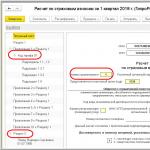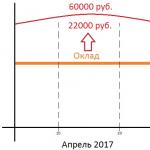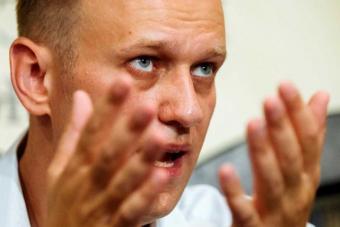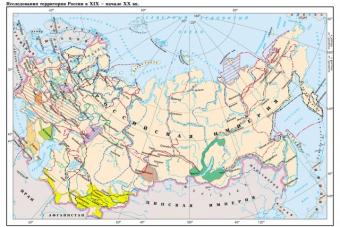Resuscitation measures are a set of actions aimed at restoring and maintaining effective blood circulation and respiratory function to save a person’s life. Cardiac arrest requires immediate response and recovery measures. This procedure is considered indirect cardiac massage - artificial stimulation of cardiac movements with a closed chest through decompression, that is, compression. This movement imitates systole - the contraction of the heart, and relaxation - the second phase, or diastole. When should chest compressions be used, read further in the article.
When should chest compressions be used?
Cardiac arrest is a situation in which gas exchange and nutrition of all tissues and organs stop. Necrosis occurs - cell death associated with the accumulation of metabolic products and lack of oxygen supply. It is believed that the higher the metabolic rate in an organ, the less time it takes for it to die due to stopping effective blood circulation. For example, for brain cells this period is only 5-7 minutes.
Providing first aid is actions that can save a person. However, it is necessary to know when to use your cardiopulmonary resuscitation (CPR) skills and when, unfortunately, it is pointless.
The main indication in this case is clinical death - the transition period between life and biological death, the reversible stage of dying. Vital signs completely disappear, which is important to check when assessing the need for external cardiac massage.
Characteristic features of such a state that need to be recorded at the scene of events:
- There is no pulse in the radial and carotid arteries. It is more important to detect the second option without feeling the characteristic signs of a pulse wave on the victim’s neck.
- Respiratory movements do not occur at all or are similar to agonal movements - sharp and strong inhalations and exhalations, or short and frequent ones. To check a sign, you do not need to hold a mirror or a pen to a person’s mouth - searching for them will take up precious time. Experts recommend simply looking at the movements of the chest, and this can be done while trying to feel the pulse.
- The pupils are maximally dilated, there is no reaction to light - reflex constriction of the pupil.
If this description fits, then you should immediately try to restore hemodynamics - the effective movement of blood by performing chest compressions.
However, it may happen that the victim experiences:
- Signs of biological death. This indicates that too much time has passed since the circulatory arrest. Cooling of the skin with the appearance of characteristic violet-blue cadaveric spots, numbness of the limbs, a pupil in the form of a “cat’s eye” - a thin slit.
- Severe polytrauma, when there are multiple fractures of the ribs or separation of the limbs.
- The presence of a pulse means that the heart is still working, even if the person is unconscious.
These conditions are contraindications to CPR.
Technique for performing indirect cardiac massage
It is not by chance that massage is called external - there is no direct contact with the structures of the heart; the action occurs with the chest closed.
The first step is to assess the condition and the presence of indications for resuscitation, after which it is important not to forget to call an ambulance. It's better if someone nearby calls.
Before performing chest compressions, it is important to ensure the right conditions:
- The victim should lie on a horizontal, hard surface. A universal place can be considered a hard floor or the ground if the incident occurred outdoors.
- The oral cavity must be cleaned. The head is turned to the side to allow vomit, blood, or foreign bodies to escape.
- Next, it is important to tilt your head back - this will prevent your tongue from retracting and clear your airways. It is ideal to place an improvised cushion under your neck.
The preparatory stage should last a few seconds, since each of them counts.

The technique itself consists of the following actions:
- The position of the resuscitator is on the side of the victim at chest level.
- The position of the hands during chest compressions is on the border between the lower and middle third of the sternum. Approximately this point is located two fingers above the lower edge of the sternum, but it is better to conditionally divide the bone into three parts and find the necessary border.
- The hands should be connected one on top of the other, the point of application of forces is the inner part of the elevation between the thumb and little finger. It is better not to straighten the fingers of the other hand - when “locking”, the force of influence increases.
- Movements must be rhythmic, at least 100 per minute. The degree of pressure is 3-5 cm deep, for this it is necessary to apply a sufficiently noticeable force.
- After every 30 compressions, you need to take 2 breaths. In this case, the tidal volume should be greater than usual - you should first take a deep breath.
- The pulse in the carotid arteries is monitored every minute.
Important! The main rule is not to bend your elbows! Movements should be made with the body, not with the hands, otherwise the depth of compression will be insufficient. The hands should be a kind of transmission lever.
Actions of one person
If there is only one resuscitator, then he has to cope with everything alone. Recommended ratios vary: previously it was believed that one rescuer could take two breaths every 15 chest compressions, now this figure still does not change, it remains in the form of a 30:2 rule.
It is very difficult to perform indirect cardiac massage alone, however, the reason for stopping resuscitation efforts is considered to be exhaustion of the rescuer’s strength.
Actions of two people
The help of a second witness to the tragedy is necessary in order to call an ambulance and provide the most effective CPR.
If we talk about the recommendations of the European Association of Reanimatologists, the ratio of 30:2 does not change regardless of the number of participants. However, the “old school” says something else - two people can take the tempo 5:1, and then one rescuer does chest compressions, and the second does artificial respiration.
Another option is to carry out the entire algorithm alone and change after a while; this significantly saves effort and increases the chances of waiting for specialists.
Rules for resuscitation of children
A child’s body is different from an adult’s, and therefore requires special actions when performing chest compressions:
- The hands are located at the lower edge of the sternum.
- Pressing is carried out not with two hands, but with one or even two fingers - depending on the age of the child.
- The tidal volume should not be very large. It will be enough for infants to inhale the air contained in the oral cavity.
- The ratio in children is allowed 5:1, while the depth of pressure is about 1.5-2 cm, but the rate remains at 100 per minute.
Forecast
According to various sources, closed cardiac massage should be performed until:
- pulse recovery;
- arrival of specialized assistance;
- exhaustion of the resuscitators' strength.
The average duration of rhythmic pressure on the sternum is about 30 minutes, after which we can reliably talk about the death of brain structures.
The prognosis depends on the time of initiation of CPR, the quality of its implementation and the characteristics of the patient’s body. Statistics show too contradictory figures - from 5 to 65% of cases end in the restoration of vital functions. However, the inverse relationship is obvious - without appropriate procedures, cardiac arrest leads to death in 100%. Therefore, it is the duty of every person to make every effort to save the life of the victim.
In case of cardiac arrest, to maintain blood circulation in the victim, it is necessary to perform external (indirect) cardiac massage simultaneously with artificial respiration.
Method of performing external cardiac massage:
1. The victim is placed on his back on a hard base (on the floor, on the ground, etc.). Massage on a soft base is ineffective and dangerous: you can rupture the liver! It is also useful to raise the victim's legs half a meter above chest level.
2. Unfasten the waist belt (or similar piece of clothing that tightens the upper abdomen) to avoid injury to the liver during massage.
3. unbutton outerwear on the chest.
4. The rescuer stands to the left or right of the victim, estimates by eye or touch the length of the chest (the bones to which the ribs are attached in front) and divides this distance in half, this point corresponds to the second or third button on a shirt or blouse.
5. The rescuer places one of his palms (after sharp extension at the wrist joint) on the lower half of the victim’s sternum so that the axis of the wrist joint coincides with the long axis of the sternum.
6. To increase pressure on the sternum, the rescuer places the second palm on the back surface of the first. The fingers of both hands should be raised so that they do not touch the chest during the massage.
7. The rescuer positions himself, if possible, so that his hands are perpendicular to the surface of the victim’s chest; only with this positioning of the hands can a strictly vertical push of the sternum be ensured, leading to its compression. Any other position of the rescuer's hands is completely unacceptable and dangerous. Remember: you need to press not on the heart area, but on the sternum!
8. The rescuer quickly leans forward so that the weight of the body passes to the arms, and thereby bends the sternum by 4-5 cm, which is only possible with an average pressure force of about 50 kg. That is why heart massage should be carried out not only using the strength of the arms, but also the mass of the torso. The rescuer must be at such a level in relation to the victim that he can press on the sternum with his arms straightened at the elbow joints.
9. After short pressure on the sternum, you need to quickly release it, thus, artificial compression of the heart is replaced by its relaxation. While relaxing, do not touch the victim’s chest with your hands.
10. The optimal rate of chest compressions for an adult is 60-70 compressions per minute.
During cardiac massage, rib fractures are possible, which
determined by a characteristic crunch during compression of the sternum. This complication, which in itself is quite unpleasant, should not stop the massage process.
If the rescuer performs artificial respiration and cardiac massage alone, you should
alternate these operations in the following order: after two deep blows into the mouth or nose, the rescuer presses on the chest 15 times, then repeats two deep blows and 15 pushes, etc. You need to do approximately 60-65 pressures per minute. When alternating artificial respiration and massage, the pause should be minimal, both manipulations are carried out on one side.
If the rescuer has an assistant at his disposal, then one of them should perform artificial respiration, and the second should perform external cardiac massage. During insufflation, cardiac massage is not performed, otherwise air will not enter the victim’s lungs. Artificial respiration and cardiac massage should be carried out until stable spontaneous breathing and cardiac activity are restored or until the victim is transferred to doctors.
- How is NMS carried out?
- Recommendations for effective massage
- Closed heart massage for a child 10-12 years old
- Techniques and rules for performing NMS and artificial respiration for infants
The first and main method of saving a person who has stopped breathing is chest compressions, or CCM. It can be carried out in order to restore the functioning of the heart muscle simultaneously with blood circulation, since it requires mechanical action. Only after this the body’s vital functions are restored and continuous blood flow is normalized.
If cardiac arrest occurs, then in almost any case it is necessary to perform artificial respiration. The patient will need first aid to maintain the vital functions of his body until the ambulance arrives. All activities associated with NMS require significant effort, which involves artificial respiration.
Main signs of cardiac arrest
 Cardiac arrest is considered a sudden and complete cessation of cardiac activity, which in certain cases can occur simultaneously with the bioelectrical activity of the myocardium. The main reasons for stopping are the following:
Cardiac arrest is considered a sudden and complete cessation of cardiac activity, which in certain cases can occur simultaneously with the bioelectrical activity of the myocardium. The main reasons for stopping are the following:
- Ventricular asystole.
- Paroxysmal tachycardia.
- and etc.
Among the predisposing factors are:
- Smoking.
- Age.
- Alcohol abuse.
- Genetic.
- Excessive stress on the heart muscle (for example, playing sports).
Sudden sometimes occurs due to injury or drowning, possibly due to blocked airways as a result of electric shock.
In the latter case, clinical death inevitably occurs. It should be remembered that the following signs can signal sudden cardiac arrest:

- Consciousness is lost.
- Rare convulsive sighs appear.
- There is a sharp pallor on the face.
- The pulse disappears in the area of the carotid arteries.
- Breathing stops.
- The pupils dilate.
Indirect cardiac massage is performed until independent cardiac activity is restored, among the signs of which are the following:
- The man regains consciousness.
- A pulse appears.
- Pallor and cyanosis decrease.
- Breathing resumes.
- The pupils narrow.
Thus, in order to save the life of the victim, it is necessary to carry out resuscitation actions, taking into account all the prevailing circumstances, and at the same time call an ambulance.
Return to contents
How is NMS carried out?
Carrying out NMS, or external cardiac massage, is performed during artificial ventilation of the lungs.
 This is done by alternating ventilation and massage, regardless of the reasons why the heart stopped. The main thing is to remember the timeliness and correctness of actions related to cardiac resuscitation of a patient whose body has lost its vital functions. This leads to the death of the victim before the ambulance arrives.
This is done by alternating ventilation and massage, regardless of the reasons why the heart stopped. The main thing is to remember the timeliness and correctness of actions related to cardiac resuscitation of a patient whose body has lost its vital functions. This leads to the death of the victim before the ambulance arrives.
The victim's body shows signs of cardiac arrest, so he needs emergency help. It can only be provided by those people who were near him at that moment. First, they kneel near the patient’s chest and determine the area on the palm that should be pressed. It is easy to bend the base of the palm by applying sufficient pressure.
It is necessary to correctly follow the massage technique, rhythmically squeezing the chest and pressing on it with both hands, which causes the blood to be squeezed out of the heart muscle, which begins to spread through the vessels. The heart is pressed against the spine. The process of blood circulation in the victim’s body is resumed if about 60-70 presses are made with both hands per minute. If there is no cardiac activity, then these manipulations will be sufficient.
If clinical death occurs, muscle tone is significantly reduced, so the mobility of the chest increases, which makes it easier to perform actions related to simulating the work of the heart muscle. Whether there is blood circulation is determined simultaneously with the observation of the pulse. It is measured in the wrist, neck or femoral artery.
If the condition is terminal, then the pulse should be felt where the area of the carotid artery is located, since it is not possible to determine it at the level of the wrist. For this purpose, fingers are placed on the larynx, on top of the so-called Adam's apple, after which they are moved along the neck.
Return to contents
Mandatory steps in the process of cardiac massage
 According to the technique, the rescuer begins to perform NMS, standing on the right side of the patient. To locate the xiphoid process, first run a finger along the person's ribs. Using the index and middle fingers, a small tubercle is found on the sternum, which should be lower than the level of the nipples, or on it. Then you need to measure two fingers above the xiphoid process and place your left hand, palm down, in this place.
According to the technique, the rescuer begins to perform NMS, standing on the right side of the patient. To locate the xiphoid process, first run a finger along the person's ribs. Using the index and middle fingers, a small tubercle is found on the sternum, which should be lower than the level of the nipples, or on it. Then you need to measure two fingers above the xiphoid process and place your left hand, palm down, in this place.
The base of the palm is placed on the found place. Next, with the palm on top of your left hand, you should place your right hand on the back of it so that the fingers are pointing upward. This position of the hands will allow you to block the hands using the fingers fastened with a lock. It is important to ensure that the rescuer places his shoulders directly above the patient’s chest, placing his palms on his sternum and straightening his elbows.
At the next stage, they begin to massage, pressing with both hands on the chest. The chest is pressed down no less than 3-5 cm. The rescuer must push the sternum with pushes so that it can be shifted exactly 3-5 cm in the direction of the spine, holding it for about half a second (if the victim is an adult). After this, the rescuer must relax his arms, but do not lift them from his chest. We should not forget about artificial respiration, which is given to the patient.
With NMS, it is necessary to compress the heart, that is, its muscles, where the sternum and spine are located, which is associated with squeezing blood into the arteries. When the pressure stops, the heart fills with blood through the veins. It is important to remember that when NMS is performed correctly, only 20-40% of the normal blood circulation of a healthy person is provided, which is sufficient to maintain the body’s vital functions for an hour before the ambulance arrives. In this regard, you cannot stop the actions, but you can interrupt for seconds and continue the actions.
Return to contents
 Particular attention should be paid to the position of the rescuer, who needs to be significantly higher than the patient’s body. He can sit on a chair or kneel next to the victim if he is lying on the floor. It is necessary to ensure that the arms are straight during the massage, so you need to apply pressure when using the strength of the arms simultaneously with the weight of the victim’s torso. This allows for efficiency in order to save energy, so that NMS can be performed for a long time.
Particular attention should be paid to the position of the rescuer, who needs to be significantly higher than the patient’s body. He can sit on a chair or kneel next to the victim if he is lying on the floor. It is necessary to ensure that the arms are straight during the massage, so you need to apply pressure when using the strength of the arms simultaneously with the weight of the victim’s torso. This allows for efficiency in order to save energy, so that NMS can be performed for a long time.
Fingers should not rest on the chest, as it is necessary to give an effective massage. All forces must be directed to the lower third of the sternum, and not to the chest wall itself, which will reduce the danger associated with rib fractures.
If the patient is in a horizontal position on a hard, flat surface, then it is easier for the rescuer to apply pressure on the sternum so that the heart muscle can contract. The NMS scheme requires not only the correct location, but also the correct method of pressing.
Having quickly begun to implement NMS, forcefully press on the sternum area. It can go to a depth equal to half the height of the entire chest. The pressure is immediately followed by relaxation.
 It is important to monitor the coincidence of moments associated with pressure and relaxation. It is necessary to compress the patient’s sternum with such force that it is pressed against the spine by 5-6 cm, at a pace close to normal heart rhythms.
It is important to monitor the coincidence of moments associated with pressure and relaxation. It is necessary to compress the patient’s sternum with such force that it is pressed against the spine by 5-6 cm, at a pace close to normal heart rhythms.
Cardiac massage should be performed for at least 30 minutes. The person performing external cardiac massage must remember that the massage process cannot be stopped until 30 compressions have been made. If you rest often, this will only harm the victim, since resuscitation carried out in these rhythms causes a complete cessation of the blood circulation process.
Having made 30 presses on the chest area, about two breaths are taken into the patient’s mouth, which can be done after 150 times. It is necessary to maintain a pressure speed of about 100 times per minute, which is suitable for any patient, with the exception of a newborn.
You should wait for an ambulance or perform the necessary actions until the pulse resumes in the area of the carotid artery. If there is no pulse, then the massage should be continued until signs of biological death begin to appear, developing after clinical death has occurred within an hour.
Air enriched with oxygen enters the human body and is released through the lungs, depleted in oxygen (but still containing oxygen) and saturated with carbon dioxide, due to respiratory movements. When breathing movements stop, these processes also stop. Their maintenance is possible through artificial respiration.
Methods of performing artificial respiration using the “mouth to mouth” and “mouth to nose” methods.
- Place the victim on his back on a hard surface
- unfasten clothes, belt, etc., so that nothing restricts breathing movements
- push the victim’s lower jaw forward, open the mouth with a mouth opener (spoon, other flat object), empty the oral cavity of vomit, fragments of teeth, dentures and mucus
- tilt the victim’s head back (placing a hand or cushion under the neck to ensure unobstructed air passage) and breathe air into his mouth
- continue artificial respiration using the “mouth to mouth” method (in this case, you need to close the victim’s nasal passages with one hand to reduce air leakage) or “mouth to nose”, breathing through a gauze pad or handkerchief. If there is a rubber tube, then you can resort to the “mouth-to-tube” method by inserting it into the victim’s throat
- exhalation occurs passively due to a spontaneous decrease in the volume of the chest
- the duration of air injection should be 2 times shorter than the duration of its release from the victim’s lungs
- Having made 10-12 breaths per minute until spontaneous breathing is restored, it is advisable not to stop artificial respiration even after spontaneous breathing has been restored (within 2-3 minutes) - to consolidate the therapeutic effect.
Frequent breathing movements may make the resuscitator feel dizzy, then he should be replaced.
An indicator of the effectiveness of artificial respiration is expansion of the chest and pinkening of the skin.
Indirect cardiac massage.
Oxygen is distributed throughout the organs thanks to cardiac activity - the rhythmic contraction of the heart muscle, which works like a pump. In severe conditions, after breathing has stopped, cardiac arrest usually occurs within a few minutes. The idea of indirect or external cardiac massage is mechanical rhythmic compression of the heart between the sternum and the spine, which expels blood from the cavities of the heart. After the pressure on the sternum ceases, the cavities of the heart passively refill with blood.
Method of performing indirect cardiac massage.
- place the victim on a hard surface, the resuscitator is located on the side of the victim
- rest the palms (not fingers) of one or both straight arms on the lower third of the sternum
- press your palms in rhythmically, with pushes, using your own body weight and the efforts of both hands
- if a rib fracture occurs during chest compressions, it is necessary to continue the massage by placing the base of the palms on the sternum
- massage tempo – 50-60 shocks per minute; in an adult, the amplitude of chest oscillations should be 4-5 cm
Simultaneously with cardiac massage (1 push per second), artificial respiration is performed.
For 3-4 compressions on the chest, there is 1 deep exhalation into the victim’s mouth or nose, if there are 2 resuscitators. If there is only one resuscitator, then every 15 compressions on the sternum with an interval of 1 second, 2 artificial breaths are required. Inhalation frequency is 12-16 times per minute.
For children, the massage is performed carefully, with one hand, and for newborns - only with the fingertips. The frequency of chest compressions in newborns is 100-120 per minute, and the point of application is the lower end of the sternum.
Indirect cardiac massage should also be performed with caution on the elderly, since rough actions may result in fractures in the chest area.
Signs of the effectiveness of artificial respiration and cardiac massage
Signs of revival of a victim after clinical death when providing first aid are the sensation of spontaneous heartbeats in the palm of the person performing indirect cardiac massage, after which the massage can be stopped.
Cardiac massage and artificial respiration should be continued until cardiac activity is restored or for a period until it is possible to ensure blood circulation sufficient to support the vital functions of the higher parts of the brain, or until an ambulance arrives to resuscitate the victim.
In cases where, within 30-40 minutes, despite correctly performed cardiopulmonary resuscitation, signs of clinical death persist, resuscitation measures are stopped. It should be noted that not in all cases, even an experienced specialist can be sure of the futility of resuscitation, therefore, even with the slightest doubt in this matter, it is necessary to continue full-fledged resuscitation measures. Only if there are signs of biological death, such as the “cat’s pupil” symptom (when the eyeball is compressed from the sides, the pupil narrows and looks like a vertical slit), cardiopulmonary resuscitation is not performed.
The effectiveness of the measures taken is judged by the appearance of a pulse and the establishment of spontaneous breathing, a change in skin color, contraction of the pupils and the appearance of their reaction to light.
What not to do when performing artificial respiration and cardiac massage
- Fuss, act slowly and uncertainly.
- Forget that the victim can become a source of infectious diseases for those resuscitating him. Therefore, personal safety measures should come first.
- Leave the victim without providing first aid (including resuscitation measures).
- Perform artificial respiration without clearing the airways of foreign bodies, water, mucus, without moving the lower jaw or straightening the head.
- Excessively straighten the victim’s head to perform artificial respiration. This can lead to narrowing of the airways.
- Stop resuscitation measures until the ambulance arrives if there are no visible signs of the victim’s death.
Related articles:
Convulsions are a temporary disruption of brain function, manifested by paroxysmal involuntary muscle contractions and accompanied by disorders of perception, psyche and life support functions (digestive, excretory and other systems).
Electrical injury is local and general damage resulting from exposure to high-power electric current or a discharge of atmospheric electricity (lightning). Electrical trauma causes damage to the skin (mucous membrane) at the entry point...
Indirect cardiac massage technique
Blood circulation can be restored by pressing on the chest. In this case, the heart is compressed between the sternum and the spine, and blood is pushed out of the heart into the vessels. Rhythmic pressure imitates heart contractions and restores blood flow. This massage is called indirect because the rescuer applies pressure to the heart through the chest.
The victim is placed on his back, always on a hard surface. If he is lying on the bed, he should be moved to the floor.
The clothes on the patient's chest are unbuttoned, freeing the chest. The rescuer stands (at full height or on his knees) to the side of the victim. He places one palm on the lower half of the patient’s sternum so that the fingers are perpendicular to it. The other hand is placed on top. Raised fingers do not touch the body. The rescuer's straight arms are positioned perpendicular to the victim's chest. The massage is performed with quick thrusts, using the weight of the whole body, without bending your elbows. The patient's sternum should bend by 4-5 cm.
Reanimator action plan
- Place the victim face up on a hard surface.
- Tilt his head back.
- Give the patient 2 breaths using the “mouth to mouth” or “mouth to nose” method.
- Check the carotid pulse. If not, continue resuscitation.
- Start chest compressions: make 15 compressions on the sternum in a row with an interval of 1 second.
- 2 more breaths of artificial respiration. Do 4 such cycles (30 presses and 2 inhalations).
- After this, check the carotid pulse again. If it is not there, resuscitation continues. Repeat 5 cycles of 30 presses and 2 breaths.
Action diagram of two rescuers
- Lay the victim on his back on a hard surface.
- Tilt your head back.
- Stand on the side of the patient: the first rescuer is at the head of the bed (he breathes for the patient), the second is opposite the chest (he massages the heart).
- The first rescuer takes 2 breaths of artificial respiration.
- The second rescuer checks the carotid pulse. If it is not there, resuscitation continues.
- The second rescuer presses the chest five times in a row with an interval of 1 second, massaging the patient’s heart.
- After this, the first rescuer gives the victim 1 breath.
- So, in turn, the rescuers carry out 10 cycles - each cycle includes 5 presses and 1 inhalation.
- Then check the pulse in the carotid artery. If it is not there, resuscitation is continued: repeat 10 cycles of 5 presses and 1 breath.
see also
Wikimedia Foundation. 2010.
See what “Indirect cardiac massage” is in other dictionaries:
I Heart massage is a method of renewing and artificially maintaining blood circulation in the body through rhythmic compression of the heart, promoting the movement of blood from its cavities into the great vessels; used in cases of sudden cessation... ... Medical encyclopedia
Heart massage- Rice. 1. The place of contact between the arm and the sternum during chest compressions. Rice. 1. The place of contact between the arm and the sternum during chest compressions. Cardiac massage is a mechanical effect on the heart after it has stopped in order to restore it... ... First aid - popular encyclopedia
Artificial cardiac massage (or indirect cardiac massage) is a set of measures aimed at maintaining a person’s blood circulation when the heartbeat stops. Contents 1 Technique of indirect cardiac massage 1.1 Scheme of the resuscitator’s actions ... Wikipedia
See Indirect cardiac massage... Large medical dictionary
Massage- Massage. MASSAGE (French massage, from Arabic to touch), mechanical impact using special techniques on the surface of the body or any organ for therapeutic or hygienic purposes. It is carried out with hands, less often with devices (see Vibration therapy) ... Illustrated Encyclopedic Dictionary
- (French massage from Arabic to touch), mechanical impact using special techniques on the surface of the body or any organ for therapeutic or hygienic purposes. Increases sweat and sebum secretion, improves blood and lymph circulation, metabolism... Big Encyclopedic Dictionary





